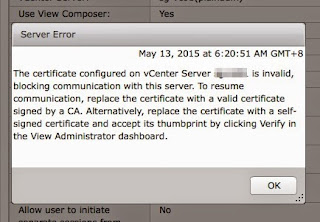vMotion Between CPUs
With the release of vSphere 6.7, and the ability to have EVC on a per VM level instead of a per cluster level raise some questions.
Before we start here is an article on how to check what level of EVC to use here.
One of the questions often asked, does vMotion works across newer CPUs in the same generation without an EVC cluster?
If you follow this KB, in the last paragraph:
Once the virtual machine is power cycled:
What this state means if you have a new server with a new CPU generation, technically you can perform a vMotion without having the VM in an EVC cluster.
However, there are cases where vMotion will fail even the CPU is of the same generation due to an older version of VM hardware which has a more stringent check. As stated here, due to the destination host with a newer CPU with ISA extension not found on the source host.
Before we start here is an article on how to check what level of EVC to use here.
One of the questions often asked, does vMotion works across newer CPUs in the same generation without an EVC cluster?
If you follow this KB, in the last paragraph:
Once the virtual machine is power cycled:
- They are only able to move to other ESX/ESXi hosts that are at the same CPU generation or newer.
However, there are cases where vMotion will fail even the CPU is of the same generation due to an older version of VM hardware which has a more stringent check. As stated here, due to the destination host with a newer CPU with ISA extension not found on the source host.
In the above case, vMotion will still fail without having the VM in an EVC cluster unless the VM is upgraded with a newer version of VM hardware.
In a good practice, when upgrading your vSphere environment, upgrade your VMware Tools and VM hardware as much as possible. Often than not, I have seen many environments with old VMware Tools and VM hardware but of a newer version vSphere environment.
In any of which, both upgrading of VM hardware and placing a cluster or a VM (in vSphere 6.7) in an EVC mode, require a power cycle (note the difference, not a restart).

Comments